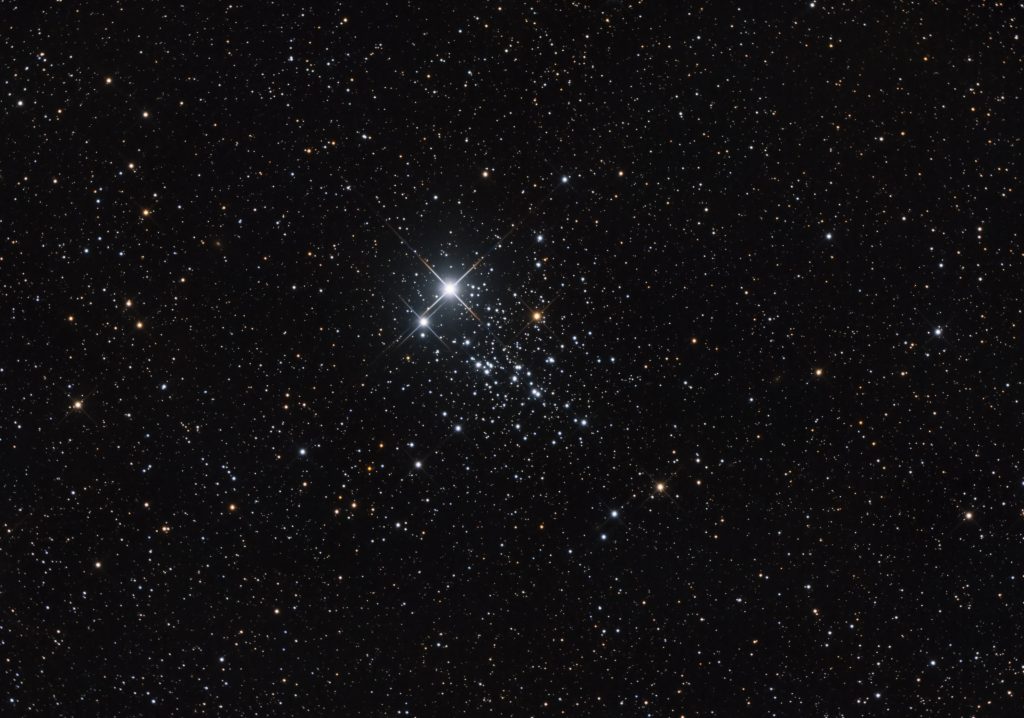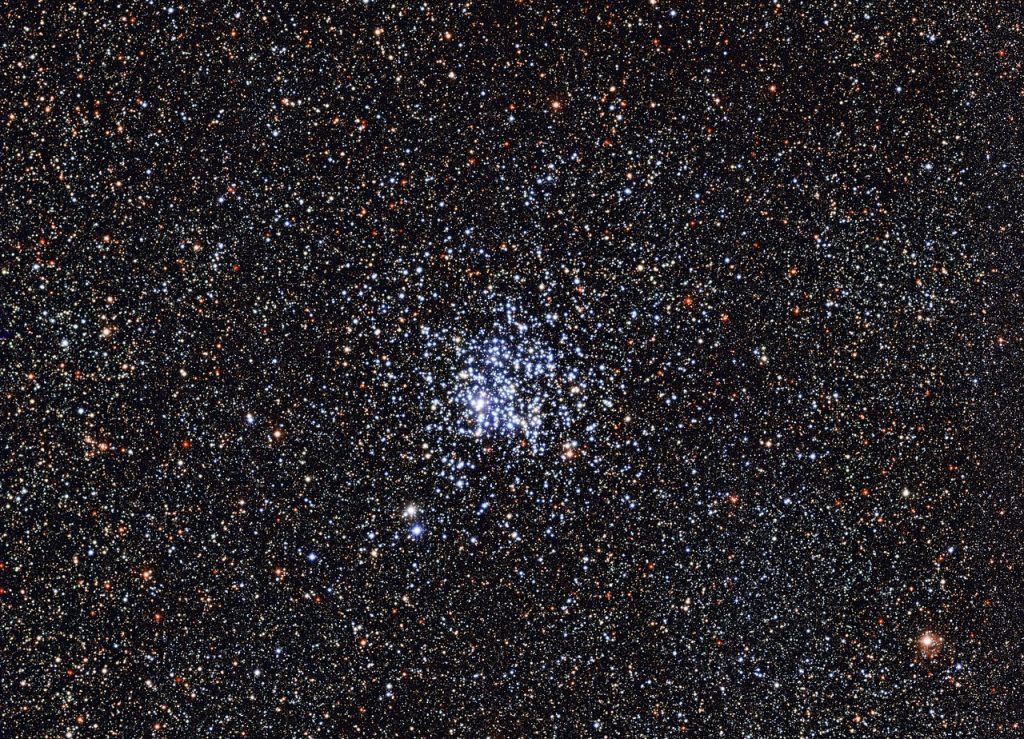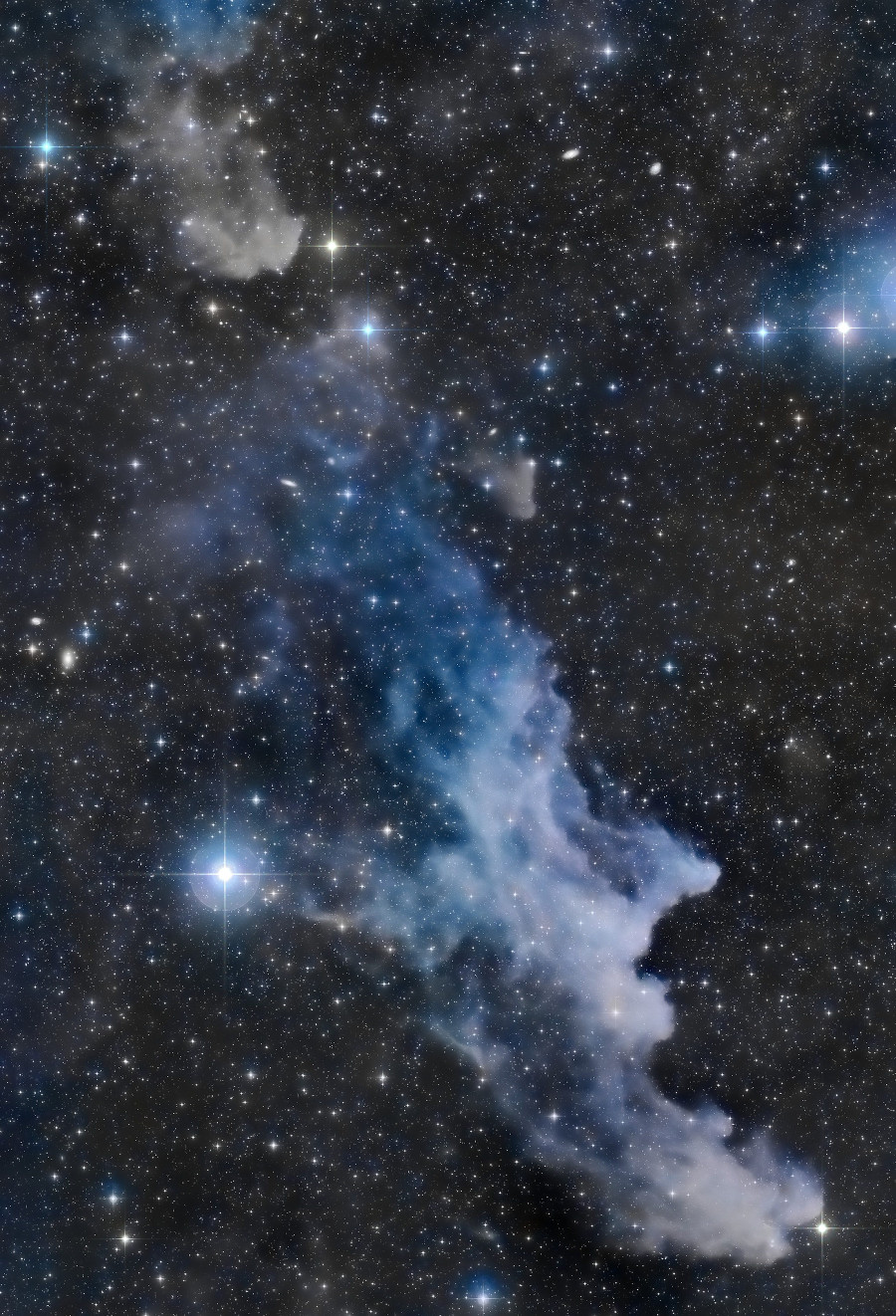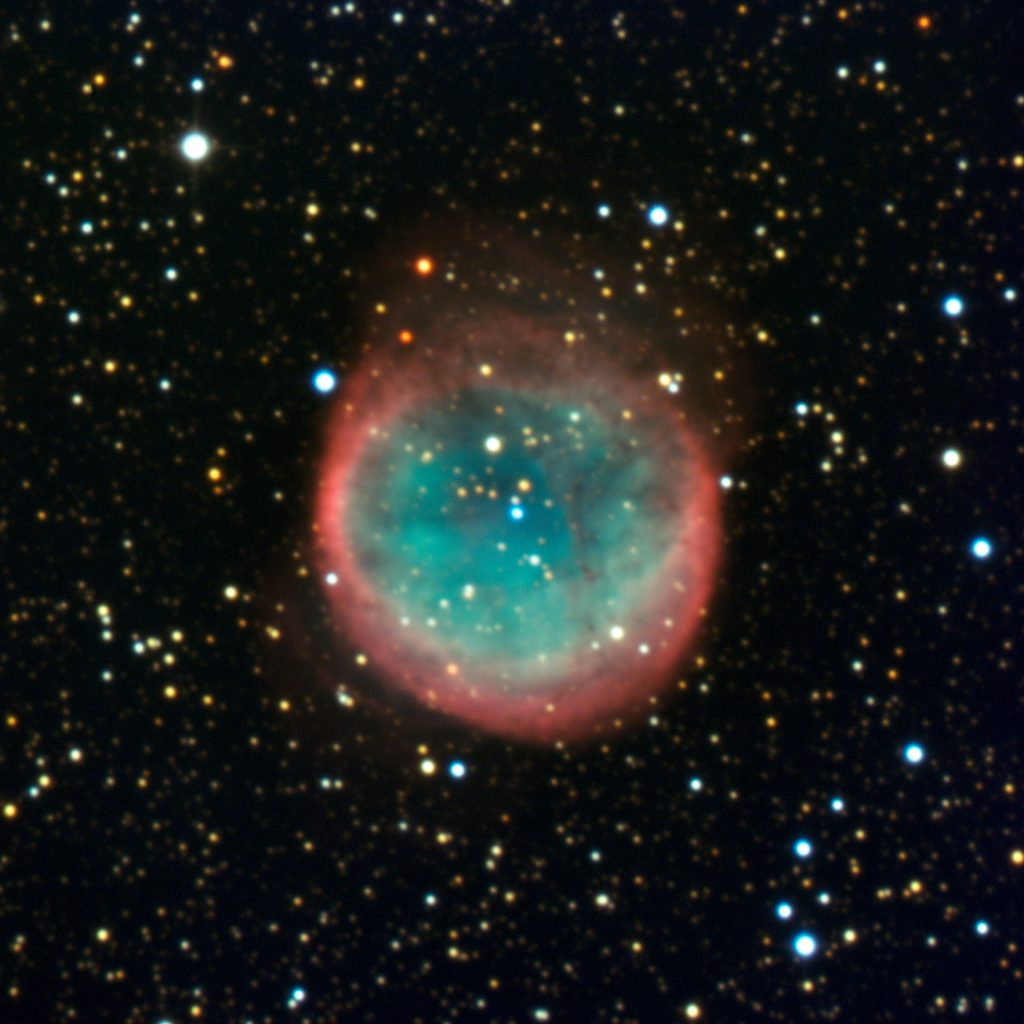Moonless Nights Provide Plenty of Planets, Meagre Meteors, a Comet, a Pulsing Eye, and Some Tricky Treats!
NGC 457, better known as the Owl Cluster, ET Cluster, and Dragonfly Cluster, was imaged by “Astrodoc” Ron Brecher of Guelph, Ontario. The bright stars are the eyes. The body and feet extend down to the right. Squint to see the upswept, curving chains of stars for the wings.This image covers a finger’s width of…
Read more



